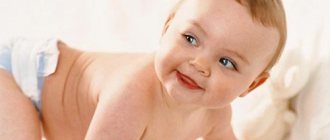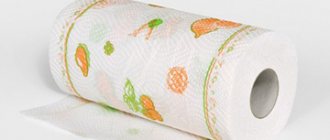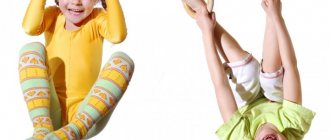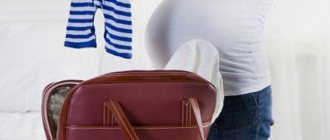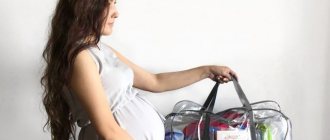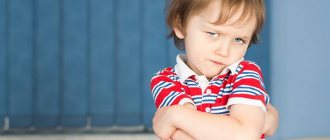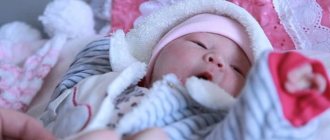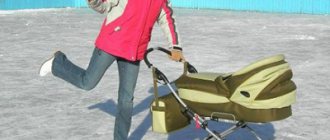Parents are often overwhelmed with excitement when planning a joint vacation with their children, especially if this is their first experience. To protect yourself from unnecessary worries and unforeseen surprises, you should seriously consider the issue of collecting a first aid kit for travel and make a detailed list.
Do not underestimate the importance of purchasing medicines for your travel first aid kit for future use. Children are not immune from falls and injuries out of the blue, and their immature immune system is not able to cope with new viruses and infections on vacation.
Anti-burn medications and medications for travel
If you are planning a trip to the sea, then parents should take into account that the child will be in constant contact with water and the sun. Children's skin is still very delicate and under the influence of such an aggressive environment can simply burn. Therefore, before going to the sea, it is very important to put in your first aid kit products that will protect your baby from ultraviolet rays.
Pharmacy counters offer a wide range of recreational medications. They indicate the composition, degree of protection and recommended age.
You should pay attention to the baby’s skin; if he is very light, then the degree of protection should be maximum.
On the road with babies
Traveling abroad with babies under one year old is now becoming increasingly popular. Young parents are brave people, and when going on a trip, they do not plan to leave the baby at home. So, if you are traveling with a baby, a children's first aid kit for travel should contain the items necessary for children of this age:
- dill water (in the form of tea bags or ground fennel seeds for its preparation) - to relieve intestinal colic;
- anesthetic gel or drops (“Kalgel”, “Bebident”), used for teething;
- a small rubber bulb for constipation;
- baby cream or powder for diaper rash and heat rash;
- sunscreen with high-level UV filters;
- To protect babies from insects, it is better not to use creams and lotions to avoid them getting into the body, limit yourself to a mosquito net for the stroller.
The above list of medications for infants is worth reviewing, taking into account age restrictions. Thus, a first aid kit for a baby at sea can be equipped as follows: nasal drops (“Nazivin”, “Aquamaris”); antipyretic (Viburkol suppositories, Nurofen syrup); sorbent (“Enterosgel”); antidiarrheal (“Smecta”); antiallergic (“Fenistil”).
Do not forget that all these medications on the road are only emergency aid for the baby. Only a doctor can make a correct diagnosis, and he will also prescribe a course of treatment if the need arises. But we sincerely wish that your baby will not need either a first aid kit or a doctor’s consultation.
- Everything you need to know about travel health insurance
Take cold medications with you
Anti-cold medications for holidays with a child should also be in the arsenal of every parent. A child’s body is not yet fully formed and its immune system is susceptible to the influence of various viruses and bacteria. Therefore, he can get sick both at home and on vacation.
Antipyretics:
- Nurofen or Ibufen. Available in syrups and tablets. Recommended for children from the first days of life;
- Paracetamol;
- Efferalgan in candles;
- Thermometer.
It should be remembered that antipyretic drugs are not recommended for use if body temperature is below 38.5 C°.
Vasoconstrictor drugs for the nose:
- Vibrocil. Helps relieve nasal congestion. It is recommended to use at night so that the baby can get some sleep. However, these drops do not treat the nature of the disease and it is not recommended to use them for more than 5 days. For a longer period of illness, the drops should be changed to contain a different component. For example, Nazivin;
- Derinat. This is an immunostimulating drug that is used for the prevention and treatment of colds;
- Sinupred. Local antibiotic. Recommended for advanced forms of the disease;
- Saline solution or “Spray”. Used for rinsing the nose. It is recommended to use before instilling the main medication. In this case, treatment will be more effective;
- Protalgol. Relieves inflammation.
Before using any drug, you should consult your doctor.
Cough medicines
- Lazolvan. Liquefies mucus and promotes its removal;
- Bromhexine. Effective in fighting infection.
- ACC. Tablets that are diluted in water. Helps in the fight against dry cough. This product is recommended for children over 6 years old.
- Throat treatment
- Chlorphilipt. Anti-inflammatory spray that relieves swelling and has a cooling effect;
- Furazolidol. Lozenges.
- Inhalipt. Spray based on medicinal herbs.
- Tantun Verde. Spray for the throat.
When choosing drugs, the age of the child should be taken into account. For children over 5 years old, tablets are suitable, but for younger children it is better to use sprays.
If a child develops ear inflammation due to a cold, then you should stock up on Otipax ear drops for the trip.
First aid kit for children's camp
Summer is the favorite time of year for all children, without exception. Vacations, vacations with family and friends, trips to grandma, to the sea, hiking - all these are unforgettable emotions and impressions.
For adults, things are different - at best, three weeks of vacation, and the rest of the time there is a constant question: with whom to leave the child. Therefore, a place where you can spend time with benefit, interest and pleasure is a children's camp: the child has fun, and the parents know that he is under supervision.
When packing a travel bag, mom and dad try to bring everything they need with them, but a separate collection point is a children’s first aid kit at sea for a child. Is it worth giving medications at all, and what medications should I take with me on the road? Let's try to figure it out.
Rather, it will not be quite a first aid kit, because there is no point in bringing along antipyretics, cough drops or brilliant green and a bandage - this entire set is available at the first aid station at the camp.
And you are unlikely to want your child to decide for himself how many, when and what pills he needs to take; after all, it is not safe. The list of medications for the trip should be compiled taking into account the individual characteristics of the child and the presence of chronic diseases. Medicines to relieve exacerbations of chronic diseases (if any). In this case, you must inform the camp counselor and medical worker. They should be aware if the child has allergies, for example to the sun, plants, insect bites or some component of food. Antiallergic and bronchodilators . If your child is allergic or asthmatic and takes medications on an ongoing basis, it is also worth informing the counselor about this. No matter how responsible the baby is, you should not rely on him to take medications on his own. Insect bite repellents and sunscreens . Be sure to put creams or sprays in your first aid kit - they will come in handy on the seaside, but first familiarize your child with the instructions for their safe use. If the products are new and you have not used them before, perform a test control on a small area of the child’s skin before the trip to avoid allergic reactions at camp. Sunburn Remedy . Even though during the daytime hours of high solar activity in children's institutions, exposure to the sun is limited, sometimes a child's delicate skin only needs a little sun to turn red. In this case, any product based on dexpanthenol will help. An older child can use Panthenol spray, while children of primary school age will find it more convenient to use Bepanten cream. Pills for motion sickness . If the road to the camp is not close, and the child gets motion sickness in transport, you should take care of anti-motion sickness tablets, which are usually taken an hour before the trip. In addition, during the camp shift there are often excursions where these drugs will also come in handy. Germicidal patches . Recreation in the camp means a lot of games in the fresh air, on the shore, active games, hikes in the forest and many more interesting activities. And scratches, bruises and abrasions are their integral attribute. It’s good to have plasters on hand that can cover a small wound. The composition of a first aid kit for a children's camp can change at your discretion, but in any case, the child needs to be explained the rules of hygiene and behavior in a children's group in order to minimize the filling of the bag with medicines and also minimize its use.
Enterosorbents
Children are so restless. They always want to touch or taste something. Sometimes, even the most vigilant mother cannot keep track of her children. After which unpleasant consequences may occur, in the form of diarrhea or vomiting. Therefore, answering the question of what medications to take to the sea with a child, we can firmly note - enterosorbents.
- White coal, attoxyl. These are absorbent substances that remove intoxication from the body;
- Nifuraxesit. This is an antibacterial drug. Quickly eliminates bacteria that cause diarrhea and vomiting;
- Smecta. Chalk solution, which helps relieve indigestion;
- Regidron and Barjomi. Replenish water balance in the body;
- Linux. Probiotic to restore intestinal flora.
- Polysorb. Removes harmful substances from the body.
- Enterosgel. Sorbent that helps with poisoning.
It is very important to monitor the child's condition. Frequent vomiting and diarrhea can lead to severe dehydration. Therefore, the baby must be constantly given water. If after drinking water he immediately begins to vomit, then you should immediately consult a doctor or call an ambulance.
For intestinal infection
In case of stomach upset, it is better to take with you medications such as:
- “Smecta” – removes toxins, is effective against diarrhea and vomiting. The product can be taken from birth. It is enough to dissolve the powder in water according to the instructions.
- "Enterofuril" is an antimicrobial drug that fights intestinal infections. Allowed for children over 2 years old.
- "Regidron" - replenishes the loss of salts and fluids during diarrhea and vomiting. Sold in sachets, diluted according to instructions.
“No-shpu” and “Papaverine” are dangerous to give to children; they relieve attacks of acute pain when urgent medical attention is needed. In case of acute pain, it is necessary to exclude appendicitis and acute diseases; it is dangerous to relieve symptoms.
What medications should I take on vacation with my child for injuries?
Children are very curious and fearless. They can run and jump endlessly, rarely thinking about safety. After such active walks, parents are faced with various bruises, cuts and wounds in different parts of the body.
Therefore, the pharmacy arsenal must have all the necessary means and attributes to provide primary care to your child.
- Sterile wet wipes. Alcohol maybe. This will be needed to clean the wound;
- Cotton pads or ordinary medical cotton wool;
- Hydrogen peroxide. For treating wounds.
- Iodine or brilliant green;
- Ointments for bruises. This may be Troxevasin or Bepanten;
- Tourniquet. In case of severe bleeding;
- Bandage.
For minor injuries, you need to treat the damaged area with antiseptic drugs and seal the wound. If a parent notices that the child is weakening and becoming apathetic, then it is necessary to quickly show him to a traumatologist. Perhaps this is an internal bruise of some organ or a fracture of a limb.
Medicines for motion sickness
These products are becoming increasingly popular because they were developed relatively recently. They are used in any type of transport and can be used at any age.
Dramamine
An effective drug for dizziness, recommended for children from 3 years of age, but its use is practiced from 1 year with dosage adjustment. If the child is between 1 and 3 years old, he can take ¼ tablet 3 times a day. At the age of 4-6 years – ¼ or ½ tablet. If a child is 6-12 years old, you can take ½ or 1 tablet. Children older: 1 tablet. 3 times a day. This product works in any type of transport.
Air-sea
The medicine is in the form of lozenges, suitable exclusively for children over 3 years of age. Well prevents the symptoms of motion sickness.
Take 1 tablet every 30 minutes. travel by transport, but no more than 5 times a day.
Bonin
An American-made drug that has an antiemetic effect. The effect lasts for a day. Use only from 12 years of age, 1 hour before travel, 1-2 tablets. Chew and drink with water. The next appointment is possible only in a day.
Vertigohel
This product is available in the form of drops and tablets, but only drops are allowed for children. This drug is great for eliminating dizziness. Children under 1 year old can take 1-2 drops 3 times a day. Children 1-3 years old - 3 drops, 4-6 years old - 5 drops. Children over 6 years old – 10 drops.
Remedies for allergic reactions and mosquito bites
Allergies are an unpredictable phenomenon. Even if the child has never encountered such a problem, you should still stock up on medications that neutralize the allergen.
- Erius or Eden. Relieves swelling of the nose and larynx;
- Suprastin;
- Fenistil gel. Used for insect bites. Has a quick effect on the skin, relieves inflammation and unpleasant itching.
- Zodak or Zyrtec. Allergy drops. Can be diluted in water.
You should also stock up on repellents for ticks and other insects. Pharmacies offer many sprays and ointments. For children over 1 year old, it is recommended to apply ointments to the body. For older people, you can use a spray.
Funds for different occasions
You should always have antiseptics: iodine, brilliant green. The packaging in the form of a felt-tip pen is convenient, so you don’t have to worry about the product spreading in your bag.
- Pustular infections - on vacation, due to dirty hands, small inflammations occur, which need to be treated with an ointment with an antibiotic - “Levomikol” or “Triderm”.
- Otitis - appears quite often when swimming in the sea due to water remaining in the ears. In this case, it is better to have Otipax, Otinum, and Sofradex in your first aid kit.
- Conjunctivitis - for inflammation of the eyes, "Levomycetin" 0.25% will help.
- Motion sickness - if a child gets motion sickness, it is better to have Dramina or Avia-Sea with you.
- Muscle pain - when there is a draft and you can’t turn your neck. In such a situation, Fastum-Gel will help.
- From mosquitoes and midges - if there are a lot of insects in your vacation spot, it is better to have “Moskitol”, “Raptor”, “Raid” with you.
What medications should I take on holiday with my child abroad?
If you are planning a vacation outside your country, which involves flying, then your pharmacy kit should be reviewed. Since airline regulations limit the number of drugs.
In your hand luggage you should take the most important medications that you may need during the flight.
- Nasal drops;
- Tablets to take. If the doctor has prescribed therapy, which must be carried out strictly on time;
For chronic diseases, you should take all the medications that will alleviate the child’s condition.
If the baby suffers from asthma attacks, then the can of the drug should be in an accessible place.
Other medications can be checked in luggage.
This first aid kit should contain:
- Antipyretic syrups or suppositories.
- Thermometer.
- Antiviral drugs.
- Preparations for the gastrointestinal tract.
- Sunscreens and ointments.
- Antiseptics.
In addition, vasodilating nasal drops will not be superfluous. The thing is that during the flight there is a lot of pressure on the ears. Therefore, before departure, you should put drops on your baby’s nose. This will allow the vessels to expand, and the little fidget will not feel discomfort during the trip.
Also, before traveling outside the country, it is best to insure the whole family. This will allow local doctors to provide qualified assistance. That is, if your baby is sick or injured, you can go to the clinic for treatment. Otherwise, you will have to act on your own or urgently return home.
Nasal drops
A universal remedy for everything - allergies, nasal congestion and infections in the nasal cavity, that is, green snot - is Polydex nasal spray. And like all universal remedies, Polydexa does not work well, so it would be better to replace this drug with other means. Which ones?
First of all, you will need vasoconstrictor drops , and you will need them on the plane. I usually recommend putting them in your nose just before the flight - when you are already in your seats. This is necessary in order to relieve swelling of the nasal mucosa and possible swelling of the mouth of the Eustachian tube so that the takeoff goes smoothly.
Accordingly, before landing, nasal drops should be used (if the flight lasts more than 4 hours) immediately before descent - when the flight attendant asks everyone to take their seats, turn off electronic devices and fasten their seat belts.
Of the anti-infective agents, it is best to take Isofra nasal spray with you (it is the only one approved for use in children under one year of age). If you have already put Tobradex or Dex-Gentamicin eye drops in your medicine cabinet, then it would be better to add Rinofluimucil spray to them. Not only does it thin out snot and a little (just a little, to be honest) relieves swelling of the nasal mucosa, but also, when mixed with eye drops, turns into an excellent antibacterial nasal spray that will cure any runny nose in 2-3 days.
It is better not to take antiviral nasal sprays, such as influenza or interferon for topical use, with you - the likelihood of contracting a viral infection on vacation is quite low. An exception is if the child suffered from viral rhinitis all year. Then there is a possibility that a lingering viral infection on the nasal mucosa may still worsen during the trip.
Among the antiallergic drugs, you can take cromohexal (I already wrote that it can also be a good help for infectious rhinitis due to its anti-inflammatory effect) or allergodil, which is much better than cromohexal in relieving the symptoms of allergic rhinitis. If your child already has a history of hay fever, then you should additionally put Avamis spray in your first aid kit - it works faster than Nasonex, which is loved by pediatricians.
Advertising
First aid kit for parents
When planning a trip, don’t forget about yourself. After all, no one is immune from the disease.
An adult's first aid kit should have the following medications:
- Antipyretics (Fervex, Paracetamol).
- Headache tablets.
- Ointments for bruises, dislocations and sprains.
- Validol, Corvalol.
- Antiviral drugs.
- Sorbents, enterosorbents and allergy remedies.
- Remedies for digestion and stomach.
- Zelenka, iodine.
If you have diseases, then the first aid kit should contain the entire list of medications prescribed by the doctor.
Recommendations
For your first aid kit, try to choose products that are hermetically sealed. Iodine and brilliant green can be bought in pencil form; for coughs it is convenient to use not syrups (only for babies), but sprays. Take napkins with you in convenient packaging. Rectal suppositories may melt, so give preference to medications in tablets or suspensions.
It's better to pack two first aid kits. In the one that will be at hand, you should put: hydrogen peroxide, iodine, a plaster, a bandage, cotton wool, an anti-sickness remedy. In the main one, put medications for fever, pain, intestinal disorders and sunscreen; it’s also better to put the thermometer away.
Choosing an insect repellent
Repellents can be natural or chemical. Chemical ones have a composition based on DEET or diethyltoluamide, the content of which should be no more than 8%, or based on DMF or dimethyl phthalate - no more than 10%. They are usually sold in “adult” and “children’s” formats. Natural oils include essential oils, the smell of which repels insects. For children, cloves and lavender are suitable.
Chemical repellents are approved for children from 2-3 years old; they must have a state registration number with the letter “U”, which means “safe for children.” The validity period of chemical repellents is no more than 4 hours, and if the manufacturer claims that the composition will last longer, it is better not to believe it.
When spraying repellents, be sure to follow the instructions: do not apply them near the eyes, ears and mouth, avoid damaged areas of the skin, and wash your hands thoroughly after application.
Children under 2 years of age will have to be protected mechanically: for example, by placing them in a playpen covered with mesh. You can use natural repellents and vegetable oils, but remember: they are applied only with cream, their strong concentration is dangerous and can cause burns, and they are also serious allergens, so it is better to “test” the product at home in advance.
Choosing sunscreen
Sunscreen for your baby should reliably protect against ultraviolet radiation and be absolutely safe. Most of the names are suitable for children from 6 months, but this is due to the fact that very little ones cannot be left in the open sun. It is better to protect them from burns with clothing, awnings and umbrellas.
Ideally, a children's sunscreen should not contain:
- oxybenzone, which can cause allergies;
- methylparaben, which causes skin aging;
- essential oils - we wrote about them a little higher;
- alcohol, if it is at the very beginning of the “composition”, because it dries the skin;
- fragrances, which are also allergenic;
- vitamin A, which, when interacting with ultraviolet radiation, can harm the skin.
The non-profit association EWG, which identifies the presence of toxic substances in cosmetics, has compiled a ranking of the best sunscreens for children. We present it for you.
- All Good Products, Kid's Sunscreen, SPF 30 made with zinc oxide, green tea juice, calendula and chamomile.
- All Terrain KidSport Sunscreen Lotion, SPF 30, is made with zinc oxide with vitamin E and aloe vera to hydrate skin.
- Badger Active Kids, Zinc Oxide Sunscreen Cream, SPF 30 based on zinc oxide with sea buckthorn extract.
- COOLA Mineral Baby, Mineral Sunscreen, SPF 50 based on titanium dioxide with plant extracts, waterproof.
- Goddess Garden Kids Sport, Natural Sunscreen, SPF 30 based on titanium dioxide with shea butter and aloe vera juice, waterproof.
Among the domestic products there are also good ones, for example, “Our Mother” SPF 20 and “My Sun” SPF 30 based on titanium dioxide.
Medicines for skin or eye injuries
First of all, in such cases you need to have alcohol, hydrogen peroxide, sterile cotton wool and iodine with you.
But the main medications for injuries to the skin and mucous membranes of the eyes are:
- Miramistin is a universal antibacterial agent used to treat wounds and sore throats;
- Chlorhexidine solution - an alcohol-free antiseptic for treating cuts and abrasions;
- Okomistin is a universal antiseptic used for the eyes, for treating wounds, and for the ears;
- Tsiprolet is an antibiotic used for eye injuries, 1 drop. 3 times a day.

